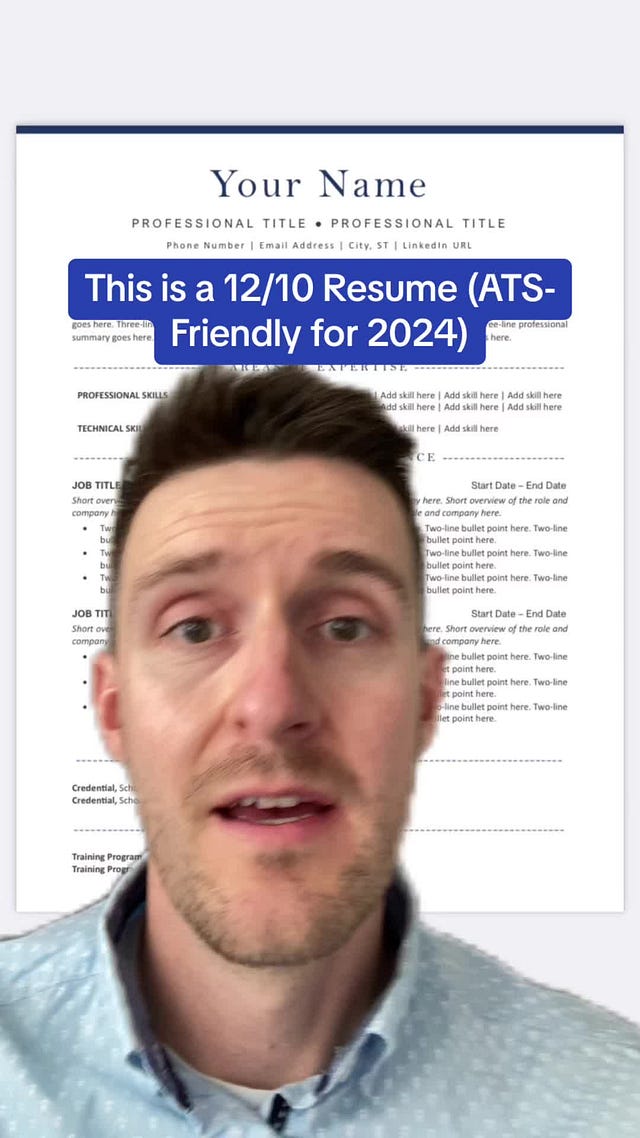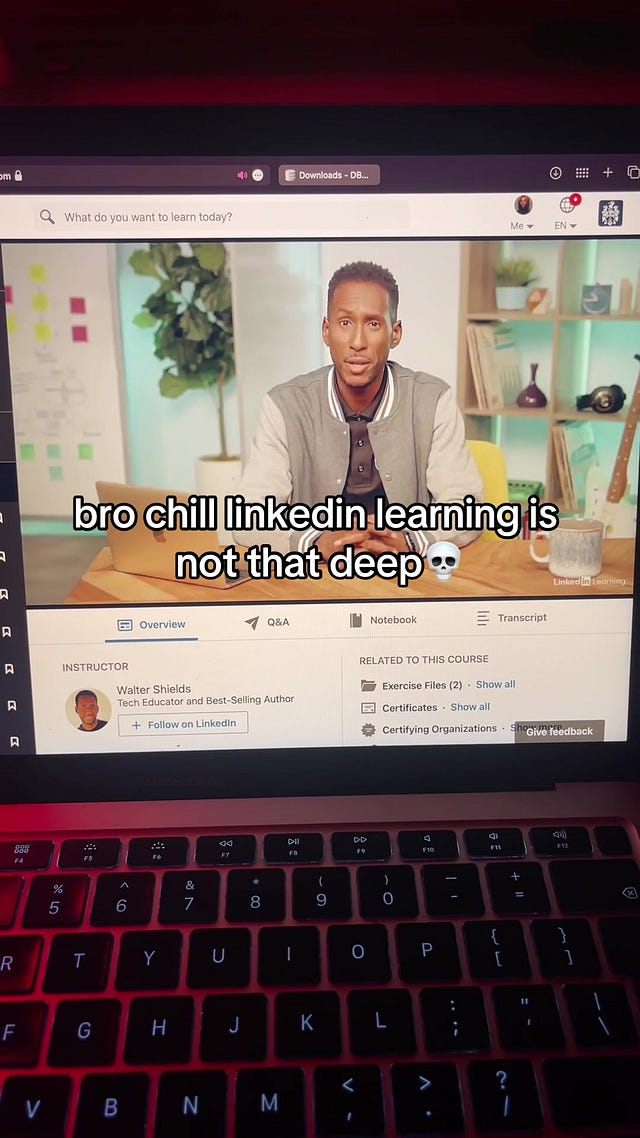Hello!
Thank you for joining me, I’m so glad you’re here.
Yesterday I spent the day helping out at a local pride event run by a family friend. I was in charge of one of the raffle stands and made £400 for local LGBTQ+ causes, but the weather had me looking like Michael Jackson in Earth Song at times:
Let’s jump into today’s topic!
Over the past few years, there has been more and more content online about “beating” the ATS (Applicant Tracking System) that recruiters use to hire. With technology advancing before we can understand how to really use it, there are click-bait careers influencers out there ramping up anxiety in applicants, selling advice on how to “beat” these mythical technologies with their applications. And this bee has found its way into my bonnet.
Let’s start with what ATS software there are out there.
When you apply for a job, you can often easily see what software the company uses through the URL. I clicked into the first three jobs suggested to me in LinkedIn and found these examples:
You can see that these companies are using Greenhouse, Workable and Hirelocker.
These are all quite fancy, progressive products; I have personally used Zoho, Oracle, Workday, Oleeo, and two systems that could be described as “these are not meant to be recruitment systems but we have worked it so it does the job”.
The systems I have used are all pretty manual - and this is the first point I wanted to make here. Most recruiters I know are using very clunky, manual systems that are not user friendly and are certainly not very advanced. Even when using something like Workday or Oracle which has the capabilities to do much more, a lot of companies will only pay for the basic functionality.
What does that mean for applicants?
It means that functions such as scanning CVs to get a match %, reading keywords, automatically understanding the quality of an applicant… are all things most recruiters don’t have access to. Whether or not these features work well and judge fairly is a topic for another day, and certainly one I don’t have an answer to. If there are recruiters out there who have used features like this and would be comfortable sharing their opinions, I’d love to learn from you!
I found a great video of a recruiter giving a demo for the ATS Lever. From the 7 min mark, you can see how he assesses candidates. Notice how he talks about the best features being that he can see where in the list he got up to, and the inclusion of screening questions. He’s not talking about AI scanning, or any kind of voodoo tech built in to assess candidates:
The mighty Hung Lee did a massive global recruiter survey a couple of years ago, and one of the best things to come out of it was an ATS ranking. You can see that Lever actually is the second most popular one with recruiters.
Again, what does that mean for applicants?
It means that recruiters aren’t rubbing their hands with glee at tech that will automatically reject you. As you can see from the video above, Lever is a very simple, clean system that gives recruiters the ability to see your CV and skills in a useable way, and for the recruiter to flick between candidates easily. That’s all we want, really.
What are careers influencers advising?
At the core, a lot of the advice is just improving CVs in ways that make them easier for recruiters.
The way he says “trick the ATS and scanners” and also that this is specifically for 2024 makes my heart fill with rage. I will put my rage aside for a moment, though, because what he is suggesting generally improves the CV.
You have the key skills up top, that hopefully match with the job advert. If it says in the advert that candidates need to have a certain qualification or skill, you can make it super easy for the recruiter to see that you fit by putting that skill up top. I was reviewing applications last week for a role needing a particular safety qualification and it adds so much time having to scan up and down to find where the candidate has mentioned it. I even overlooked one candidate because I didn’t spot it; a colleague looked over my shoulder and pointed it out.
The CV also gives a nice summary with years of experience, and a light overview of experience. This isn’t “beating the bots”, this is making it easy for the recruiter to see what you’re all about. If you struggle with this section, I have an easy formula that I give to people I coach (which I’ll give to you for free because you’re knee-deep in my rant and I feel you should be rewarded for sticking with me here):
What you are
What your passion is
What you want
I’m a hospitality manager with 10 years’ experience in high-end hotels. I’m passionate about creating memorable experiences for guests while nurturing the next generation of hospitality employees to deliver excellence. I’m looking for a leadership role that will see me use my strategy skills to add value to a high-growth hotel chain.
Something like that. It tells the recruiter what you can do and what you’re after, so they can see if you’d like their role or not.
OK let me unpack my rage.
I care about this because even though their advice IS improving the CVs applicants use, it’s also increasing the distrust applicants have with recruiters and recruiting technology, and adding to their anxiety. Applicants who are anxious about the process will not perform to the best of their ability, and those who have a pimped-up CV full of “tricks” will be overly disheartened if they are rejected.
By ramping up this anxiety, the only people who are served are the people who receive content clicks. I believe strongly that we need to talk about recruitment and selection methods more so the next generation know what to expect, and when there comes a time when more advanced tools are commonly used by recruiters, then we need to sit down and have a chat. But at the moment, if we can have a process that has a decent user experience both on the applicant and the recruiter side, that would be super awesome.
This is not to say that no recruiters out there use AI or advanced tools. Some will. But the vast majority won’t, and certainly not to the extent that people are worried about. If you write a good quality application, you will be progressed.
And my advice to applicants is:
Use a good template. Clean, skills towards the top, include a profile.
NO charts for skills. If you say that your French is 3/4 of a pie chart but your Spanish is only 1/4 of the chart… it doesn’t tell me if you’ll be able to hold meetings in either language.
While I am totally all for people (especially women) applying for things they’re not fully qualified for, if someone lists qualifications as a requirement, please make sure you have them. I was sifting through so many applicants who had wasted their time by applying to a role that needed a finance qualification. It wastes my time and yours, meaning you don’t have energy to spend on better roles and I don’t have time to spend on more suitable candidates.
Please read all the advert and details available before applying (excellent example of why here [LinkedIn]).
The job market is tough. Please don’t make it worse for everyone by paying attention to careers influencers without recruitment experience, who want to whip up your anxiety to gain clicks.
Links
LinkedIn Links
I loved this example of an organisation using a trend to make a super cute video. Lloyds Banking used the “jump over” transition to promote their apprenticeships. It’s not polished, it’s not going to go viral - but it’s enough to get the message across, and I think this is what most people wanting to up their employer brand game should aim for.
Talking of quality video content, this retro “earn while you learn” advert is really cool!
Bruce Daisley posted about Gallup’s State of the Global Workplace, highlighting the increased loneliness felt in workplaces, as well as the impact of managers. I think we need to look closer at the loneliness and mental health of young employees.
Great news: people with learning challenges can work on a lower level of functional skills from this August. Making these routes more accessible is essential.
It also reminds me of something I often wonder - people leaving education with an EHCP…can they be supported better into employment? In an ideal world, it would be great to have organisations’ diversity experts to be informed in this and provide a better transition for people with challenges. Imagine all the amazing people we could hire if we were a little more informed on adjustments that could be made to help those with disabilities and learning challenges?
I love what Tesco are doing for their apprentices. From giving them a tablet to learn on, to giving them £3.50 a day for their lunches, these are brilliantly thought-out packages!
A CEO of a new (?) careers video platform explains why gen z don’t get on with LinkedIn. While it stands to reason that someone creating a challenger product would dunk on the original, I feel that what he says is true. The gen z chatter on Reddit and TikTok suggests that they feel (rightly?) that LinkedIn is really fake and icky.
TikTok Links
Following on from that last link, here’s a clip showing exactly what gen z hates about LinkedIn:
 Tiktok failed to load.
Tiktok failed to load.Enable 3rd party cookies or use another browser
Some videos for careers advisors out there! This time geologists explain the coolest things they’ve done: part one, part two, part three.
And a bit of fun to end. A wedding singalong that I can completely get behind:

 Tiktok failed to load.
Tiktok failed to load.Enable 3rd party cookies or use another browser
Have an awesome week!
Until next week,
Charlotte










